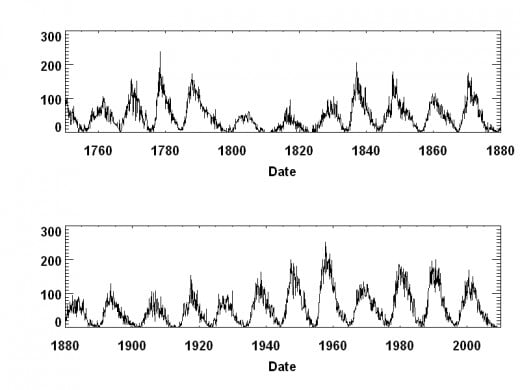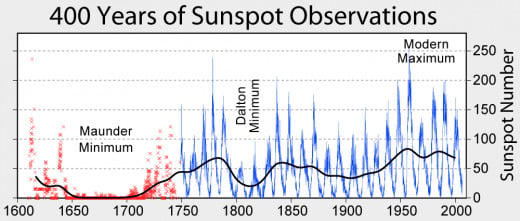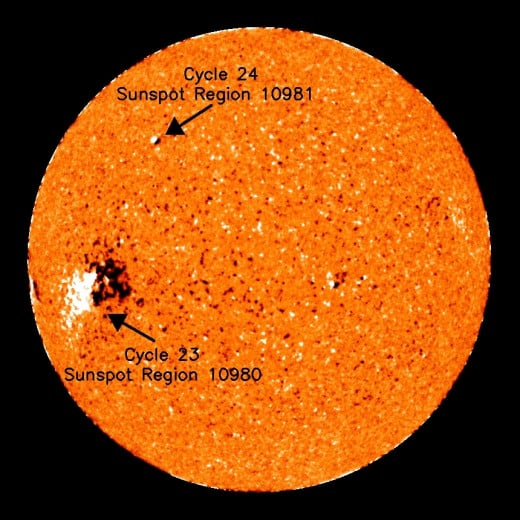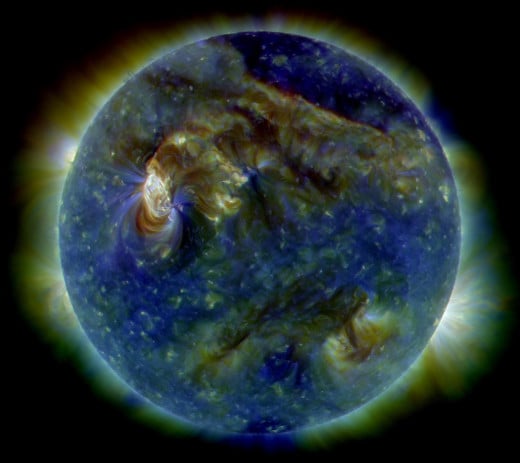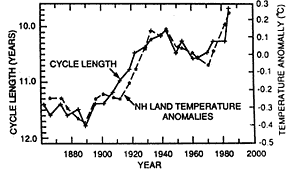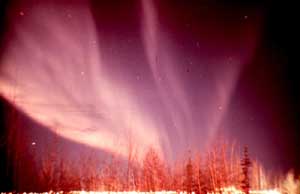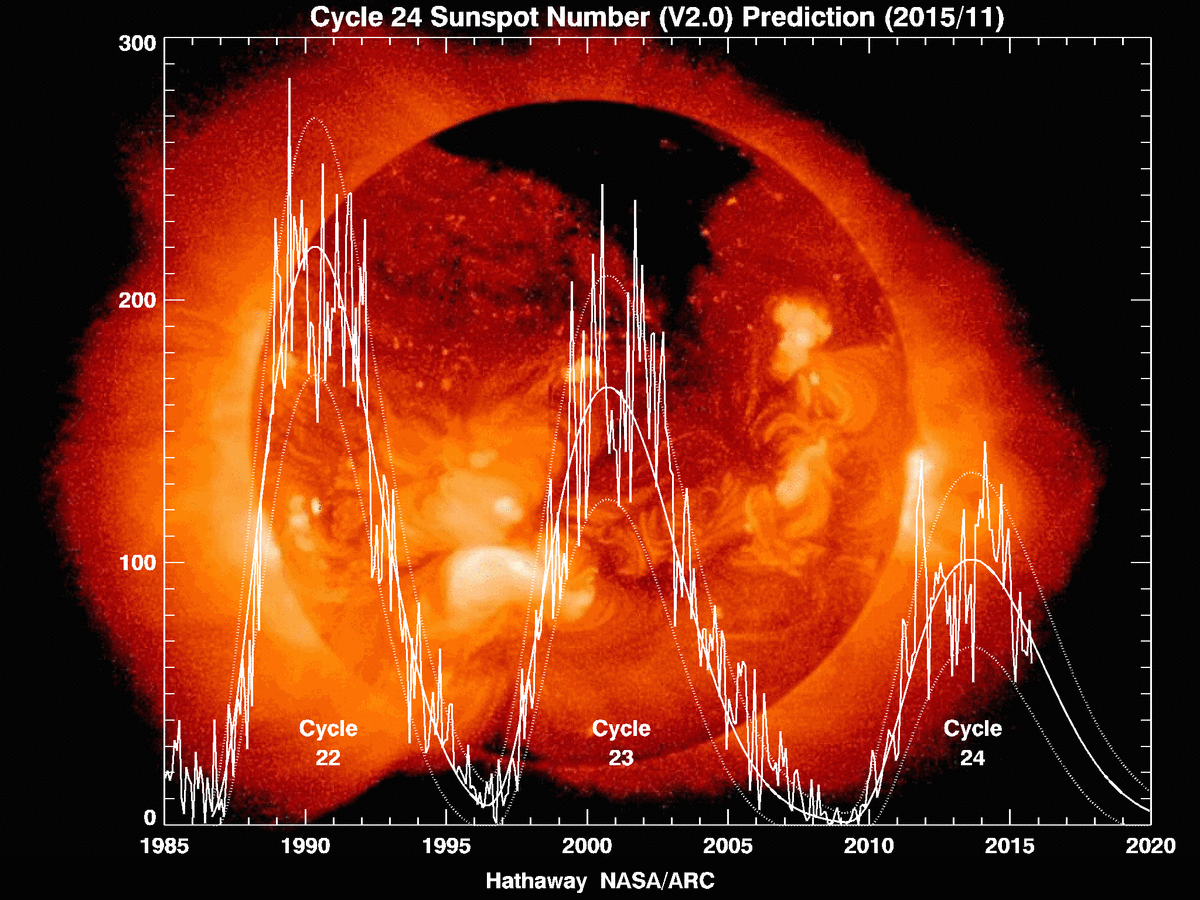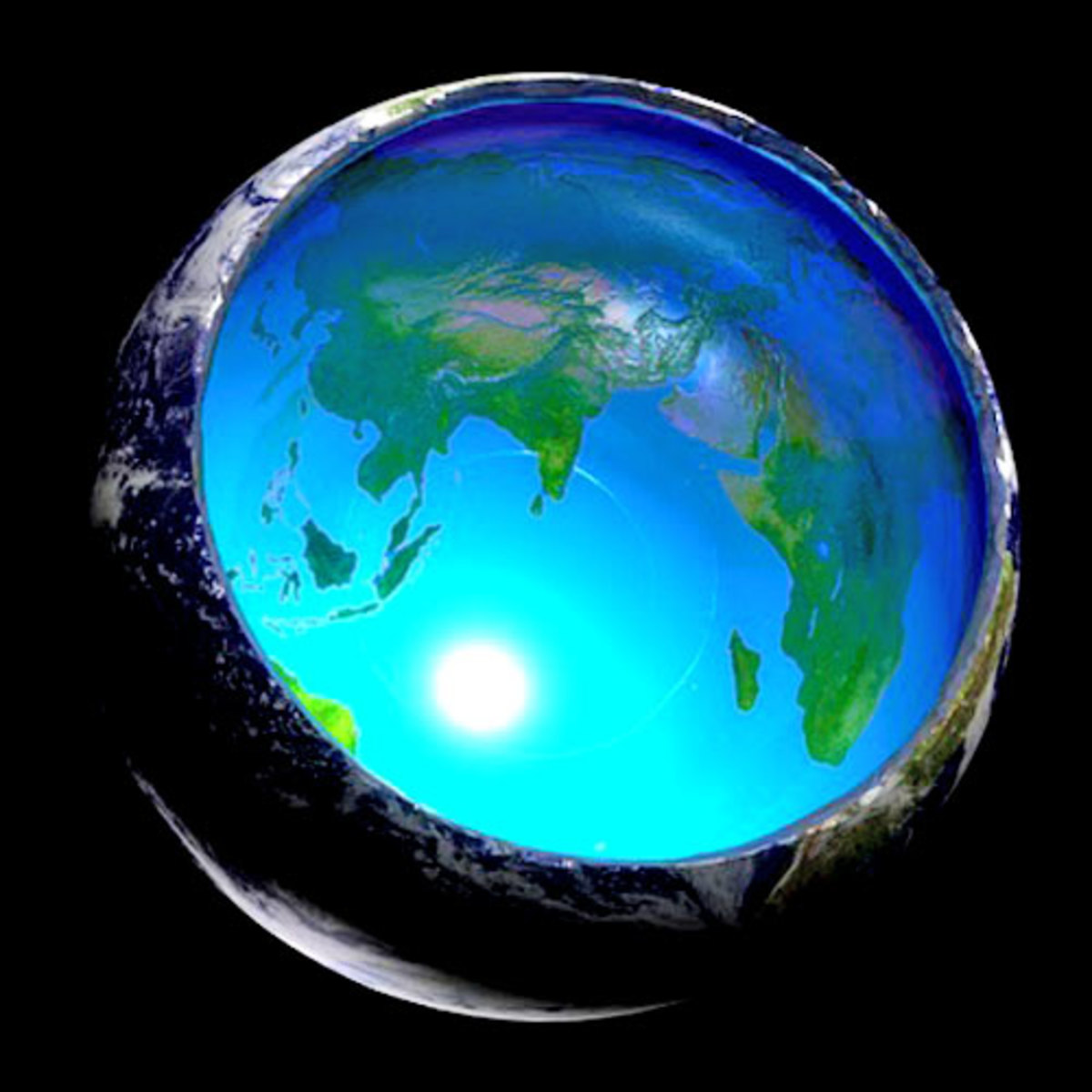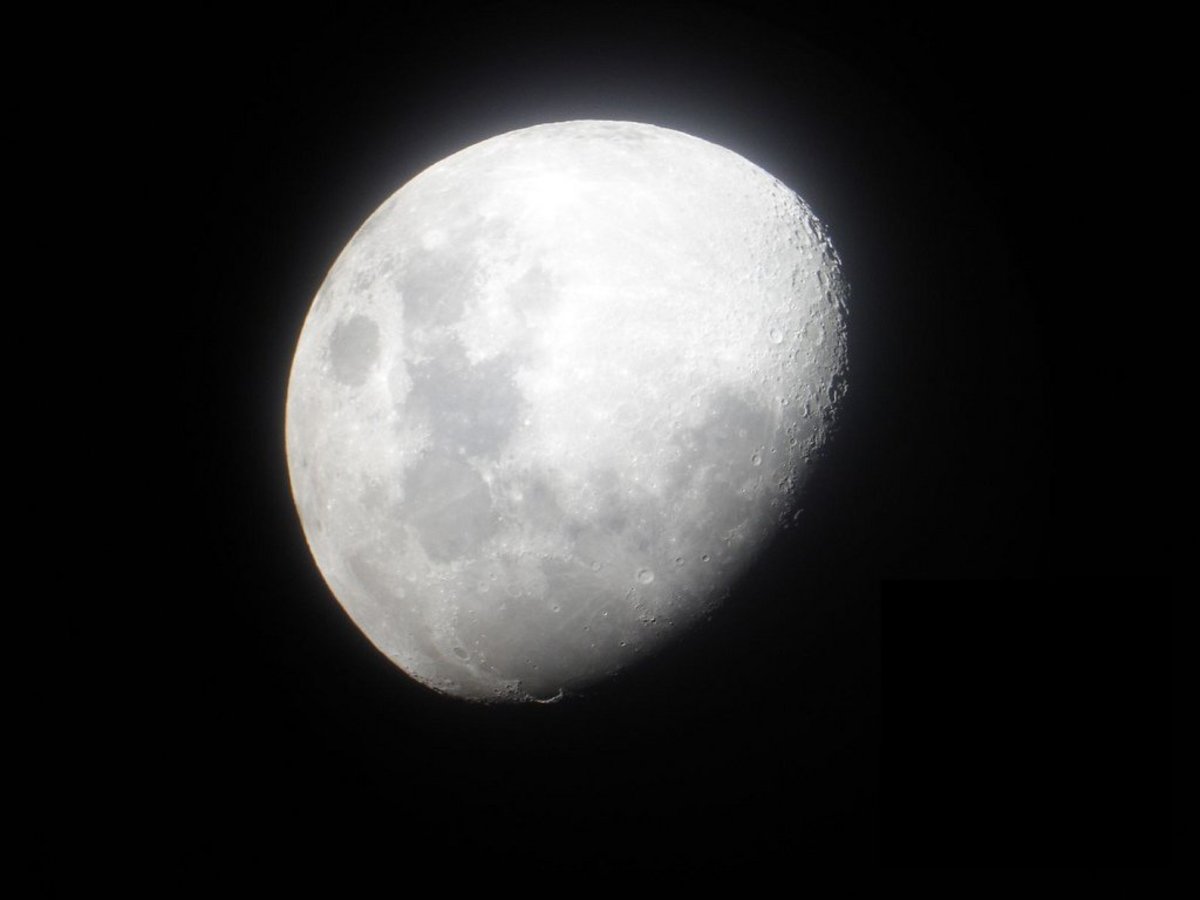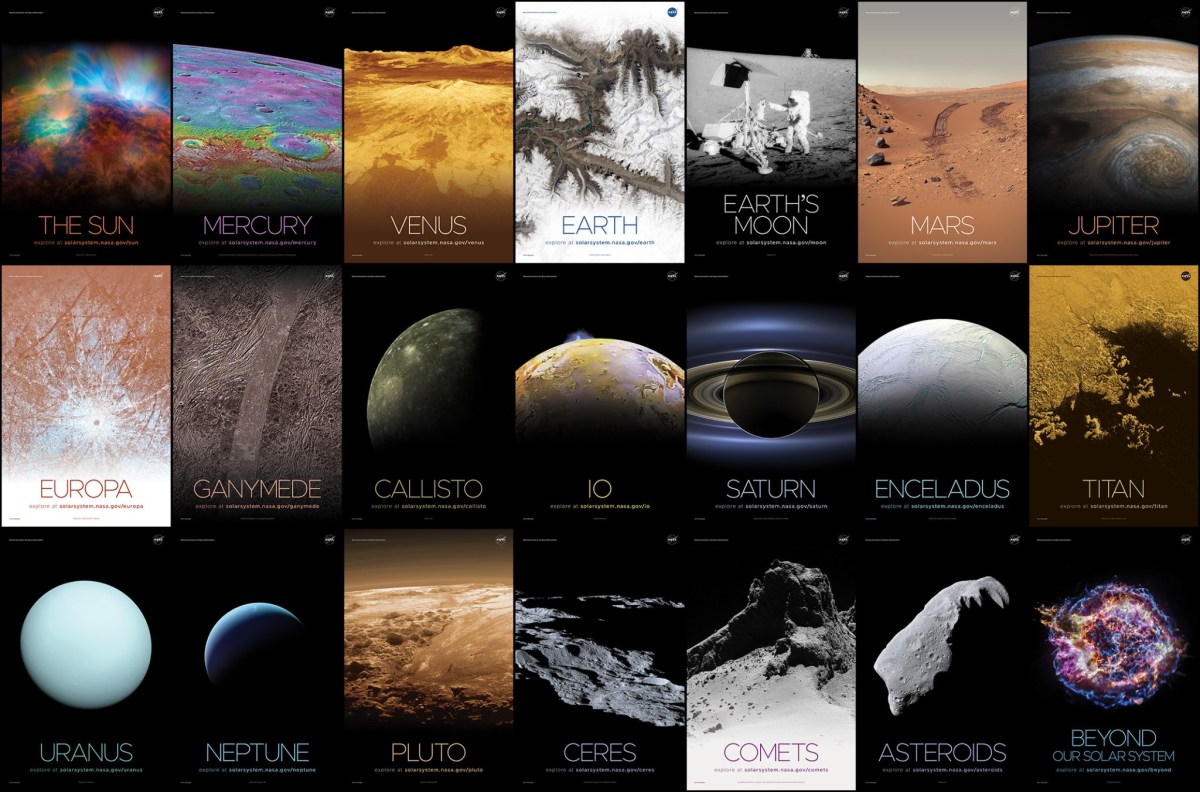How Does the Solar Cycle Work?
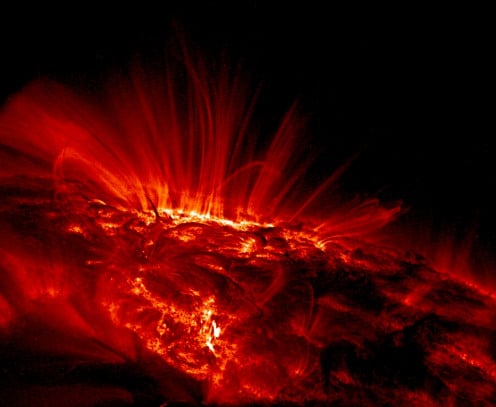
The Solar Cycle
Most of us know to never directly look into the sun. When viewing it from a distance though, our sun appears to be an unchanging, bright orange ball that we value for its life giving warmth and the energy it provides for the cycle of life. Our sun, however, is not an unchanging star. It experiences cycles of magnetic activity and areas of the strongest activity appear as sunspots.
In 325 B.C., the Greek scientist Theophrastus first identified sunspots which showed that the sun is not simply a featureless, unchanging sphere.¹
- Sunspots visible using simple instrumentation, have been charted for centuries.
- The last 300 years has seen the number of spots regularly increase and decrease over an 11 year period.
- Thus, the sun like the earth has seasons but unlike here on earth, one sun year equals 11 of our own.



Predictability in the Solar Cycles
On top of changing in number and frequency, sunspots also exibit other behaviours which are predictable and part of a cycle.
- Mapping the location of sunspots on the solar surface during the course of a cycle, the pattern made is like that of a butterfly.²
- This pattern is due to the fact that the first sunspots of each solar cycle occur mainly at the mid-latitudes of the Sun (25 to 30 degrees latitude) but later in the cycle the sunspots presence moves towards the equator of the Sun.
- As well, the first sunspots of a new Solar Cycle express ``reversed polarity``³ meaning that these new sunspots have the opposite magnetic polarity compared to sunspots from the previous solar cycle.
There are changes in the location and frequency of sunspots and the sunspot cycle is a very good way to track changes in the sun.
- The several Earth years when the the number of sunspots are at their lowest is referred to as the Solar Minimum whereas
- the years when there are numerous sunspots is known as the Solar Maximum.
- On January 4, 2008 a reversed-polarity sunspot appeared on the Sun signalling the beginning of Solar Cycle 24.



Interesting Facts about Solar Cycle 24 and the Solar Maximum
- "When airplanes fly over the poles during solar storms, they can experience radio blackouts, navigation errors and computer reboots all caused by space radiation." Avoiding the poles during solar storms solves the problem, but it costs extra time, money and fuel to "take the long way around."5
- During the solar maximum, we will see many more beautiful Northern Lights and much further south.
- During the beginning of the new Solar Cycle, both Solar Cycle 23 and 24 coexisted for as long as a year where old cycle sunspots and new cycle sunspots occurred simultaneously.
- NASA launched its new spacecraft, the Solar Dynamics Observatory, to study the active sun during Cycle 24.
Effects on the Earth during a Solar Maximum
During the solar cycle , small changes in solar irradiance may affect the Earth`s climate in a small way resulting in slightly higher temperatures during a solar maximum due to periods of intense magnetic activity and slightly lower temperatures during solar minimums. However, the more intense magnetic activity during solar maximums can create severe weather in space that can have detrimental effects to our high-tech infrastructure.
- Solar storms can disable satellites that we depend on for weather forecasts and GPS navigation resulting in strange production of radio signals causing the random reception of local police radio signals and random openings of garage doors. As well, incorrect positional information may be transmitted via GPS.
- Radio bursts from solar flares can directly interfere with cell phone reception.
- Energy released from coronal mass ejections consist of plasma from the sun itself - protons and electrons - including the accompanying magnetic field. As they travel the magnetic field lines to the earth`s poles, they collide with atmospheric atoms causing aurora borealis.
- Coronal mass ejections (CMEs) hitting Earth can cause electrical power outages, the most famous example being the Quebec outage of 1989, which left some Canadians without power for as much as six days.
- The Aurora borealis (the northern lights) should appear dramatically as brilliant red clouds, bands or curtains in the sky, several times per year and may reach as far south as the Gulf of Mexico.
- During these auroral displays, the electric currents flowing will disturb the ionosphere and have considerable negative impact on long distance radio communications and satellite-to-ground connections lasting several days.
- During these same displays, the atmosphere is heated and expands upward increasing the atmospheric drag on lower altitude satellites causing their orbital patterns to change. New orbits of these satellites and space junk will have to be recalculated.
- The Space Station and Space Shuttle will have to be vigilant to avoid collision with space junk now in their path.
- Any communication dependent on satellite transmission will be affected by ionspheric storms more common during the solar maximum. Broadcast television, cellular phone and pagers are usually dependent upon satellite transmission and their signals transmit through the ionosphere. During these storms signals from any of these devices will work intermittently and may black-out completely for long periods of time.
- In severe geomagnetic storms, astronauts and jet passengers can receive higher than normal doses of radiation.4
Sources Cited
¹ Heckman, Gary. Space Environment Center. Solar Maximum. . 1999.
² NASA Earth Observatory. Sunspots at Solar Maximum and Minimum. http://earthobservatory.nasa.gov/IOTD/view.php?id=37575. March 20, 2009
³ Phillips, Dr. Tony. NASA Science. Is a New Solar Cycle About to Begin. http://science.nasa.gov/science-news/science-at-nasa/2007/14dec_excitement/. Dec. 14, 2007.
4 Evans, Sue. Solar Max2012-2013 (Solar Cycle 24). http://www.auroraborealispage.net/solarmax.html. June 25, 2012.
5 Phillips, Dr. Tony. NASA Science. Solar Cycle 24 Begins. http://science.nasa.gov/science-news/science-at-nasa/2008/10jan_solarcycle24/

